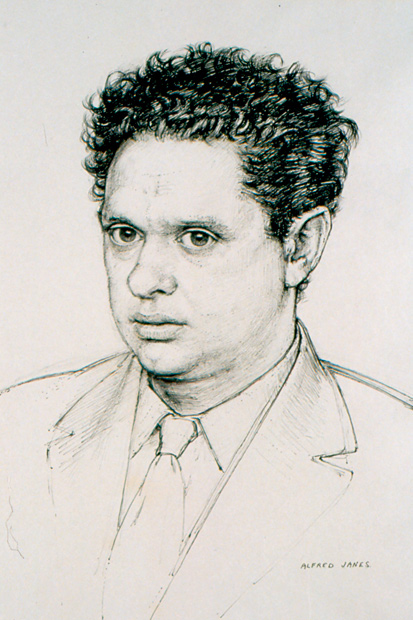Who the hell was Dylan Thomas? Boozer, womaniser, sponger, charlatan — or master craftsman, besotted husband, generosity personified and one of the greatest literary talents of the 20th century? Or all of these? Fifty years ago (in November 1964) the writer Constantine Fitzgibbon grappled with these questions in The Spectator as he completed the first full-length biography of his friend the poet.
The article was illustrated by my late father, the artist Alfred Janes, a mutual friend (Thomas had a lot of them). It was one of three portraits that he made of his contemporary, whom he had first met in their ‘ugly, lovely’ hometown of Swansea in the1930s. This one was posthumous: Thomas had died in New York in 1953 aged 39.
‘It should be possible to form a rational judgment of the man and his work,’ Fitzgibbon wrote in his piece. ‘In literary and biographical terms, I hope this is the case, but any such assessment must now be performed beneath the shadow of the Dylan Thomas legend, or legends, and these are only incidentally concerned with literature or with truth.’
The self-styled ‘Rimbaud of Cwmdonkin Drive’ always provoked extreme reactions. Now, in his centenary year, the tussle over Thomas continues, and I am contributing with my own book, based on the three portraits by my father, painted over the course of their 20-year friendship. I grew up loving ‘Fern Hill’ and Under Milk Wood, which pleasingly echoed my own childhood surroundings in Gower and Swansea. I was born too late to enjoy the visits my family made to the Boat House in Laugharne, where Thomas settled after the war above ‘the mussel pooled and the heron / Priested shore,’ but I suspect I would have enjoyed them as much as my parents did.








Comments
Join the debate for just £1 a month
Be part of the conversation with other Spectator readers by getting your first three months for £3.
UNLOCK ACCESS Just £1 a monthAlready a subscriber? Log in